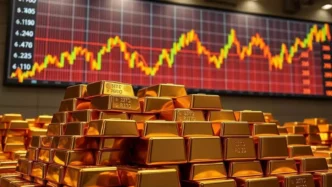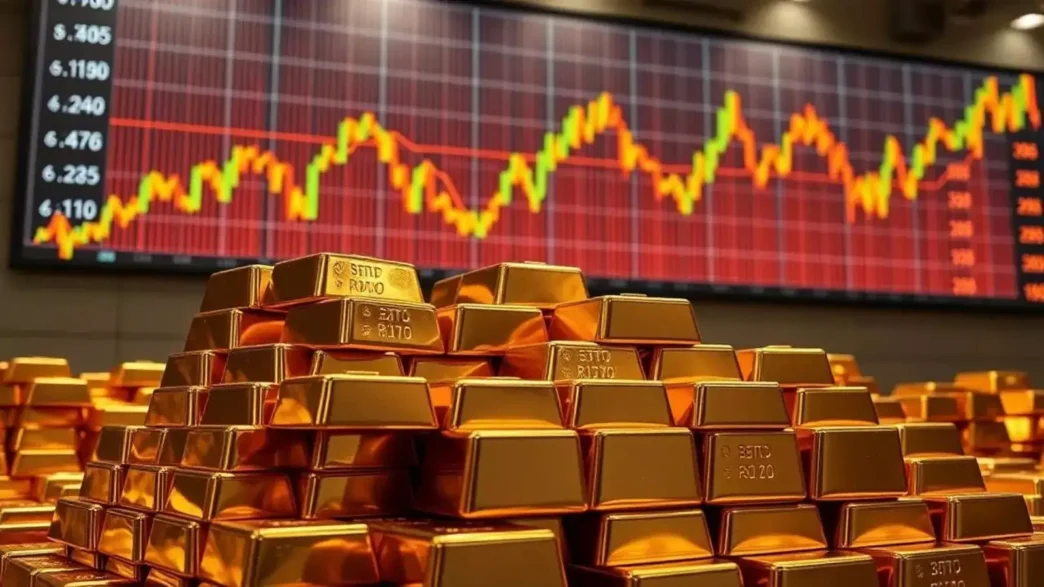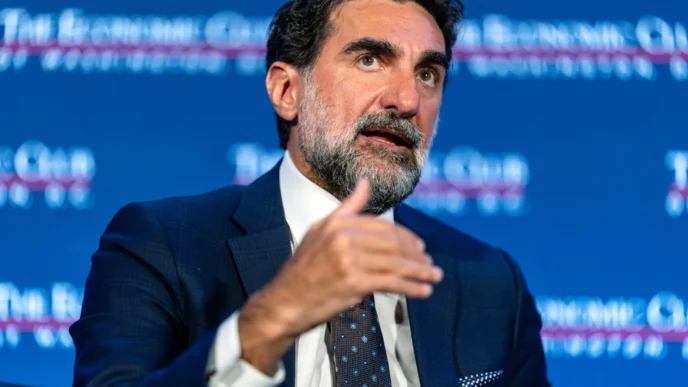After months of speculation, gold has finally experienced a sharp decline, sending shockwaves through markets yet triggering a surge of interest from bargain-hunting investors worldwide. Analysts say the drop was widely anticipated, reflecting a convergence of rising interest rates, a strengthening dollar, and growing investor appetite for riskier assets like equities and AI-driven technology companies.
The once seemingly unstoppable rally that pushed gold to record highs earlier this year has cooled, pulling the metal back to levels not seen in over a year. For traders, the move is both a warning sign and an opportunity: while volatility remains elevated, a window has opened for long-term buyers seeking to capitalize on the price retreat.
A Predictable Decline
Market strategists argue that gold’s fall was largely predictable:
- Rising U.S. Treasury yields increased the opportunity cost of holding non-yielding assets like gold.
- Dollar strength made the metal more expensive for overseas buyers, reducing demand.
- Inflation moderation reduced the urgency for traditional hedges against currency devaluation.
- Equity market optimism pulled funds away from safe-haven assets, favoring tech and growth sectors.
“Gold’s correction was overdue,” said a London-based commodities strategist. “Investors priced in a scenario where interest rates stay elevated longer than expected. This was not a crash in the classic sense—it was a recalibration.”
Global Appetite for Bargains
Despite the decline, demand has surged among sovereign wealth funds, ETFs, and private investors, all eager to take advantage of what they see as a temporary dip. Analysts note the following trends:
| Region | Investor Behavior |
|---|---|
| Asia (China, India) | Traditional retail demand spikes; jewelry and bullion purchases rise |
| Middle East | Sovereign wealth funds increasing allocations for portfolio diversification |
| North America | ETFs and institutional funds reposition holdings at lower prices |
| Europe | Hedge funds and commodity-focused funds adding to exposure |
Retail investors, in particular, have flocked to digital gold trading platforms, taking advantage of fractional ownership models to buy at lower price points.
ETFs and Institutional Inflows
Exchange-traded funds (ETFs) tracking gold futures have seen renewed inflows, signaling confidence that the price decline is temporary. Institutional investors, including pension funds and endowments, are adjusting portfolios to balance equity exposure with traditional stores of value, betting that gold’s long-term appeal remains intact despite near-term fluctuations.
Historical Perspective
Gold has historically been prone to periodic corrections, often following multi-year bull runs. Analysts note several recurring patterns:
- Rising interest rates tend to depress gold prices as borrowing costs increase.
- Strong equity markets siphon investor capital away from safe havens.
- Geopolitical calm reduces the urgency for hedging against uncertainty.
While short-term corrections are inevitable, historical trends suggest that gold retains its role as a long-term hedgeagainst financial instability and inflationary pressures.
The Psychological Factor
Market sentiment plays a critical role in gold’s movements. The recent decline prompted widespread commentary about a potential “gold crash,” yet veteran investors emphasize the difference between panic and correction.
“People get nervous because gold has been elevated for months,” said a New York-based portfolio manager. “But experienced investors recognize that temporary pullbacks are buying opportunities, not reasons to flee.”
What Comes Next
Analysts predict a period of heightened volatility as markets absorb new data from central banks, inflation reports, and geopolitical developments. Key considerations include:
- U.S. Federal Reserve policy: Any indication of interest rate cuts or pauses could reignite buying.
- Global inflation trends: Renewed price pressures may push investors back toward safe-haven assets.
- Geopolitical tensions: Escalating conflicts or trade disruptions often boost gold demand.
- Market psychology: Bargain hunters could accelerate recovery if inflows reach critical mass.
Some strategists suggest gold could stabilize in the short term between $1,800 and $1,900 per ounce, with potential rallies if macroeconomic conditions favor safe-haven assets.
Conclusion: Opportunity Amid Volatility
Gold’s recent decline serves as a reminder that even the most iconic safe-haven assets are subject to market forces, investor sentiment, and macroeconomic realities. While headlines may frame the move as a “crash,” the market response indicates that many participants see a strategic buying opportunity rather than a catastrophe.
For investors worldwide, the lesson is clear: volatility in gold markets is not a threat, but a signal—a chance to enter positions at attractive valuations before the next potential upswing.















